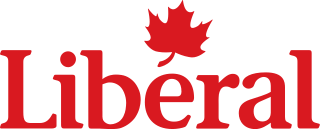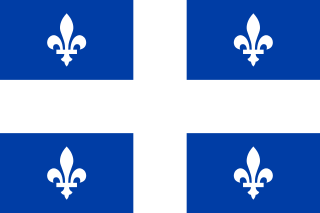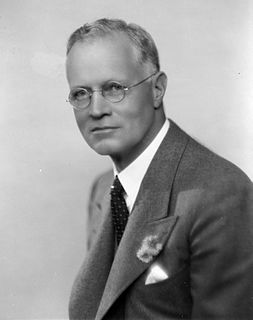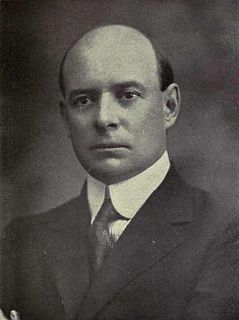This article does not cite any sources .(March 2010) (Learn how and when to remove this template message) |
| ||||||||||||||||||||||||||||||||||
235 seats in the 13th Canadian Parliament 118 seats needed for a majority | ||||||||||||||||||||||||||||||||||
|---|---|---|---|---|---|---|---|---|---|---|---|---|---|---|---|---|---|---|---|---|---|---|---|---|---|---|---|---|---|---|---|---|---|---|
| ||||||||||||||||||||||||||||||||||
 | ||||||||||||||||||||||||||||||||||
| ||||||||||||||||||||||||||||||||||
The 1917 Canadian federal election (sometimes referred to as the khaki election) was held on December 17, 1917, to elect members of the House of Commons of Canada of the 13th Parliament of Canada. Described by historian Michael Bliss as the "most bitter election in Canadian history", it was fought mainly over the issue of conscription (see Conscription Crisis of 1917). The election resulted in Prime Minister Sir Robert Borden's Unionist government elected with a strong majority and the largest percentage of the popular vote for any party in Canadian history.
In Westminster systems of government, a khaki election is any national election which is heavily influenced by wartime or postwar sentiment. In the British general election of 1900, the Conservative Party government of Lord Salisbury was returned to office, defeating a disunited Liberal Party. The reason for this name is that the election was held in the midst of the Second Boer War and khaki was the colour of the relatively new military uniform of the British Army that had been universally adopted in that war.

The House of Commons of Canada is a component of the Parliament of Canada, along with the Sovereign and the Senate. The House of Commons currently meets in a temporary Commons chamber in the West Block of the parliament buildings on Parliament Hill in Ottawa, while the Centre Block, which houses the traditional Commons chamber, undergoes a ten-year renovation.

The 13th Canadian Parliament was in session from March 18, 1918, until October 4, 1921. The membership was set by the 1917 federal election on December 17, 1917, and it changed only somewhat due to resignations and by-elections until it was dissolved prior to the 1921 election.
Contents
- National results
- Vote and seat summaries
- Results by province
- See also
- References
- Further reading
- See also 2
The previous election had been held in 1911 and was won by Borden's Conservatives. Under the law, Canada should have had an election in 1916. However, citing the emergency of the First World War, the government postponed the election largely in hope that a coalition government could be formed, as existed in Britain.

World War I, also known as the First World War or the Great War, was a global war originating in Europe that lasted from 28 July 1914 to 11 November 1918. Contemporaneously described as "the war to end all wars", it led to the mobilisation of more than 70 million military personnel, including 60 million Europeans, making it one of the largest wars in history. It is also one of the deadliest conflicts in history, with an estimated nine million combatants and seven million civilian deaths as a direct result of the war, while resulting genocides and the 1918 influenza pandemic caused another 50 to 100 million deaths worldwide.
Sir Wilfrid Laurier, head of the Liberal Party of Canada, refused to join the coalition over the issue of conscription, which was strongly opposed in the Liberal heartland of Quebec. Laurier worried that agreeing to Borden's coalition offer would cause that province to abandon the Liberals and perhaps even Canada. Borden proceeded to form a "Unionist" government, and the Liberal Party split over the issue. Many English Canadian Liberal MPs and provincial Liberal parties in English Canada supported the new Unionist government.

Sir Henri Charles Wilfrid Laurier was the seventh prime minister of Canada, in office from 11 July 1896 to 6 October 1911.

The Liberal Party of Canada is the oldest and longest-serving governing political party in Canada. The Liberals form the current government, elected in 2015. The party has dominated federal politics for much of Canada's history, holding power for almost 69 years in the 20th century—more than any other party in a developed country—and as a result, it is sometimes referred to as Canada's "natural governing party".

Quebec is one of the thirteen provinces and territories of Canada. It is bordered to the west by the province of Ontario and the bodies of water James Bay and Hudson Bay; to the north by Hudson Strait and Ungava Bay; to the east by the Gulf of Saint Lawrence and the province of Newfoundland and Labrador; and to the south by the province of New Brunswick and the U.S. states of Maine, New Hampshire, Vermont, and New York. It also shares maritime borders with Nunavut, Prince Edward Island, and Nova Scotia. Quebec is Canada's largest province by area and its second-largest administrative division; only the territory of Nunavut is larger. It is historically and politically considered to be part of Central Canada.
To ensure victory for conscription, Borden introduced two laws to skew the voting towards the government. The first, the Wartime Elections Act, disenfranchised conscientious objectors and Canadian citizens if they were born in enemy countries and had arrived after 1902. The law also gave female relatives of servicemen the vote. Thus, the 1917 election was the first federal election in which some women were allowed to vote. The other new law was the Military Voters Act, which allowed soldiers serving abroad to choose which riding their vote would be counted in or to allow the party for which they voted to select the riding in which the vote would be counted. That allowed government officials to guide the strongly pro-conscription soldiers into voting in those ridings where they would be more useful. Servicemen were given a ballot with the simple choice of "Government" or "Opposition".
The Wartime Elections Act was a bill passed on September 20, 1917 by the Conservative government of Robert Borden during the Conscription Crisis of 1917 and was instrumental in pushing Liberals to join the Conservatives in the formation of the Canadian Unionist government. While the bill was an explicit attempt to get more votes for the government, it was also the first act giving women the vote in federal elections.
A conscientious objector is an "individual who has claimed the right to refuse to perform military service" on the grounds of freedom of thought, conscience, or religion.
The Military Voters Act was a World War I piece of Canadian legislation passed in 1917, giving the right to vote to all Canadian soldiers. The Act was significant for swinging the newly enlarged military vote in the Union Party's favour, and in that it gave a large number of Canadian women the right to vote for the first time.
Soon after these measures were passed, Borden convinced a faction of Liberals (using the name Liberal-Unionists) along with Gideon Decker Robertson, who was described as a "Labour" Senator (but was unaffiliated with any Labour Party) to join with them, forming the Unionist government in October 1917. He then dissolved parliament to seek a mandate in the election, which pitted "Government" candidates, running as the Unionist Party, against the anti-conscription faction of the Liberal Party, which ran under the name Laurier Liberals.

The Senate of Canada is the upper house of the Parliament of Canada, along with the House of Commons and the Monarch. The Senate is modelled after the British House of Lords and consists of 105 members appointed by the Governor General on the advice of the Prime Minister. Seats are assigned on a regional basis: four regions—defined as Ontario, Quebec, the Maritime provinces, and the Western provinces—each receive 24 seats, with the remaining portions of the country—Newfoundland and Labrador receiving 6 seats and the three northern territories each assigned the remaining one seat. Senators may serve until they reach the age of 75.

Prior to the 1917 federal election in Canada, the Liberal Party of Canada split into two factions. To differentiate the groups, historians tend to use two retrospective names:
The divisive debate ended with the country divided on linguistic lines. The Liberals won 82 seats, 62 in Quebec, with many other seats won in provinces such as Manitoba, New Brunswick, and Ontario in ridings with significant French Canadian populations. The Unionists won 153 seats. The three Unionist won seats in Quebec were all in mainly English-speaking ridings. That led to the Francœur Motion in January 1918.
The Francœur Motion, introduced in the Legislative Assembly of Quebec in 1918 by Liberal MLA Joseph-Napoléon Francœur, declared that Quebec would be prepared to leave the Canadian federation if English Canadians felt the presence of Quebec was "an obstacle to the union, progress and development of Canada".
Que cette Chambre est d’avis que la Province de Québec serait disposée à accepter la rupture du pacte confédératif, si dans les autres provinces, on croit qu’elle est un obstacle à l’union, au progrès et au développement du Canada.
(That this House is of the opinion that the Province of Quebec would be prepared to accept the break-up of the Confederation Pact if, in the other provinces, it is believed to be an obstacle to the union, progress and development of Canada.)
Out of 235 seats, 33 were won by acclamation—17 to the Laurier Liberals (all in Quebec) and 16 to the Unionists (all outside Quebec). Two of the Unionist acclamations were for the riding of Halifax, where the only candidates were two Unionists, and where, eleven days earlier, the tragic Halifax Explosion had taken place.










